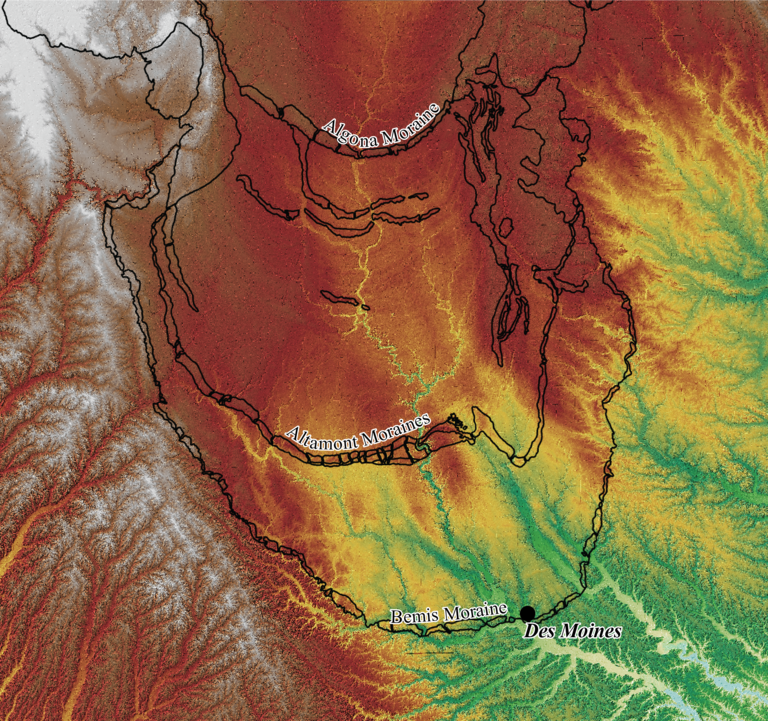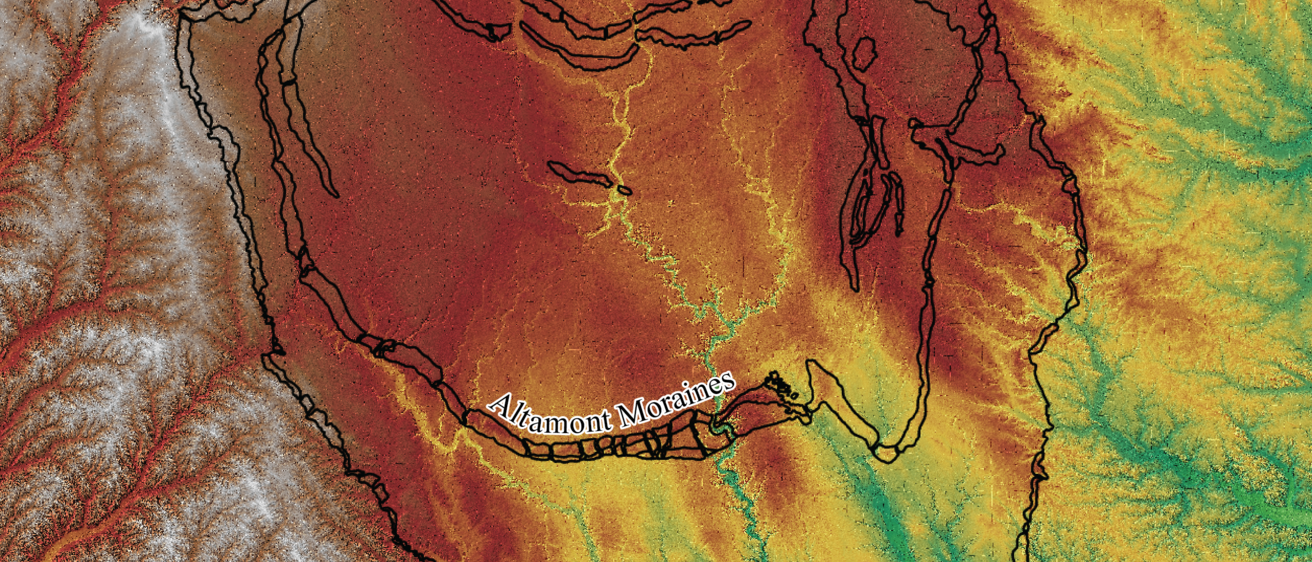Phil Kerr, IGS Geologist

It has long been known that central Iowa was recently glaciated (recent in the geologic sense, anyway). The ice lobe reached its terminal position at present-day Des Moines and is, unsurprisingly, called the Des Moines Lobe. The Bemis Moraine is the name of the ‘hill’ that forms the edge of the ice advance. Other large moraines include the Altamont and Algona. The Des Moines Lobe is somewhat unique when compared to continental glacier lobes to the northeast of Iowa. For instance, the Green Bay Lobe, which stopped around Madison, Wisconsin, left hundreds to thousands of streamlined hills called drumlins. However, no drumlins are found in Iowa. There are also fewer eskers and kames than found in Minnesota and Wisconsin. One potential reason is that the Des Moines Lobe advanced much quicker across Iowa than other lobes. But how can we know how fast the ice was moving, especially since it has long since melted?
Scientists can get an idea of the timing of ice advance by collecting radiocarbon ages from organic materials taken from the base of glacial sediment left behind. This method works in principal because there is a small amount of radioactive 14C atoms in the air. Plants process CO2 and incorporate 14C into their cells and maintain a ratio roughly equal to that in the air. Animals then eat the plants and take in the C ratio into their bodies, and so on and so forth up the food chain. Don’t worry, the levels of radioactive carbon are very low. Once an organism dies, it no longer incorporates 14C. Over time, the radioactive carbon breaks into its daughter products. Half of the 14C will decay within about 5,700 years, which is why the term ‘half-life’ is used to describe this process. The decay alters the original ratio at the time of death by reducing the 14C. Scientists can measure the carbon isotope ratio in the material and back calculate how many years it has been since an organism stopped incorporating radioactive carbon. One problem is that the concentration of the radioactive isotope varies slightly year to year. This throws off the initial ratio, so a calibration must be made. When corrections are made, the result is more accurate and provides a better estimate for when an organism died. Radiocarbon calibration has become more common in the last two decades due, in part, to improvements in technology. Higher measurement accuracy allows for dating of older materials. So, what can this tell us about the Des Moines Lobe?
Well, tree remnants are commonly found at the base of the Dows Formation (till left by the Des Moines Lobe). Chunks of trees are the best material to date, since they are larger pieces of carbon, and the till keeps out modern carbon contamination from air and water. The pieces of wood are likely from trees that were run over by the ice. So, finding out when the trees died can inform us when the ice was advancing. Although carbon dating has been used by IGS scientists for many years, previously calculated ages have not been corrected. For instance, a piece of wood in till found at the base of the Dows Formation near Ames has an uncorrected radiocarbon age of 13,700 years ago, but its true calibrated age is older, 16,600 years before present. In fact, previously reported ages from samples associated with the Des Moines Lobe are a couple thousand years older. Currently, ice is thought to have reached Des Moines around 15,700 to 16,000 years ago. However, one thing the newly calibrated ages still show is that the Des Moines Lobe rapidly advanced into Iowa - potentially up to 1-2 km a year. It was clear that the lobe had places to go and didn’t have time to play around with drumlins!
